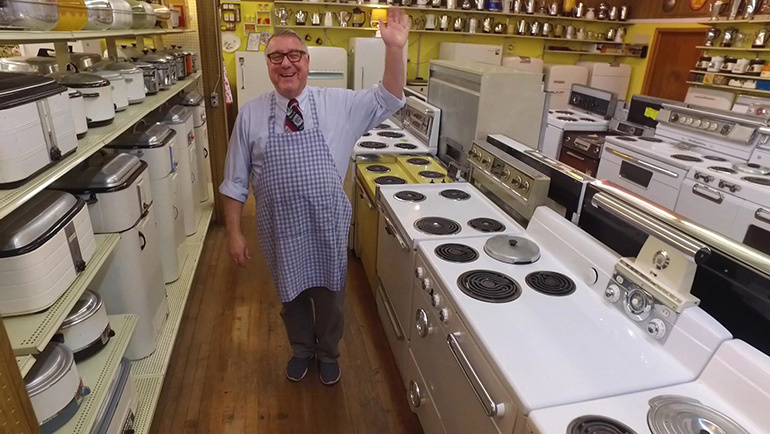
For Kevin Piotrowski, curation runs in the family.
“My father was a collector of things. He did model railroading for a while, so he was collecting all that train stuff. He would also collect things that were nautical in nature and build model ships,” said Piotrowski, special assistant to Irvin D. Reid Honors College Dean John Corvino. “As he got older, he collected Beanie Babies. He got into it deep. He was retired by then, and it gave him something to do. But throughout my dad’s life, he liked collecting certain things that appealed to him.”
That apple did not fall far from the tree. Piotrowski’s two older brothers sought out comic books and Hot Wheels, respectively. For Piotrowski, it was radios. Around age 10 or 11, he melded his love of radio as a medium with his collector birthright.
“I used to buy them at garage sales for $1. This was the mid-1970s, so most of the radios I acquired then were circa 1950s. People didn't want them and they got rid of them,” Piotrowski said. “Also, many people — neighbors and relatives — would give me ones they’d find. The radio was one of the first things I really collected in any kind of a formal way. At one point in my life, I probably had a couple hundred. I’m down to about 75 or 80 now.”
Piotrowski first came to Wayne State University in 1982 and left with his undergrad and graduate degrees 12 years later. “My issue was I had an incredibly great job as a young person. I was a motion picture projectionist and I was making really good money,” Piotrowski said. “I kind of took my sweet time with school.” After graduation in 1995, Piotrowski went to work at WDET 101.9-FM for a decade before landing his current position in the Honors College.
Piotrowski the collector was also busy during that time. From radios and typewriters to hosting a YouTube cooking show featuring vintage appliances, spend five minutes (or more) with Kevin Piotrowski and his cavalcade of collections.
Since radios were your first collectibles, do you have a favorite? And, if not the same, what is the oldest radio in your collection?
They're not the same. Those would be two different radios and they each have a personal connection. One of them is a 1940 Philco table radio, which belonged to my grandfather. He was a mechanic and owned a Mobil gas station on the west side of Detroit. This radio was in his gas station. And it was on every day, all day long. So that is a connection with him and my family history. I just love that radio because I have an emotional connection to it.
And then I have a green Zenith clock radio from 1955 that my parents bought. It was on their nightstand for, I don't know, 25 years. And that was what woke my dad up for work every morning. I have that one in my office on campus. Both of my parents are gone now, and I can’t look at that and not really think about my mom and dad. I can visualize that on their nightstand. If someone said, ‘Pick two and the rest have to go,’ those would probably be the two.
So, you got radios … what interested you next?
We go from radios to typewriters — the next collecting transition. I was collecting typewriters, before there were personal computers. You could still buy a typewriter when I started collecting. By then, they were electric. They weren't mechanical typewriters in the way something from the 1940s would be. But I was so intrigued by the design — especially with a manual typewriter — and how this thing was built, which didn't plug in and required no electricity whatsoever.
These typewriters, 80-100 years after they were manufactured, still work exactly as they were designed. I started collecting typewriters and would pick one up here and there. And typewriters are something I taught myself to really fix and repair. I can do a lot of work on them, more so than the radios.
Now we've gone from radios to typewriters. But how did you get into appliances? More so, kitchen appliances? And what item came first?
Here I am, this crazy kid collecting these old radios and then I start collecting typewriters. And now I'm a teenager, maybe 17 or 18 years old. First, let’s say that I've always been food obsessed, because I grew up in a Polish home. Food was always the focal point of absolutely everything you ever did, right? But I'm at an age now where I'm starting to drink coffee because I'm a big boy. And both of my parents were coffee drinkers and my mom made coffee every morning. She made it for Dad and herself.
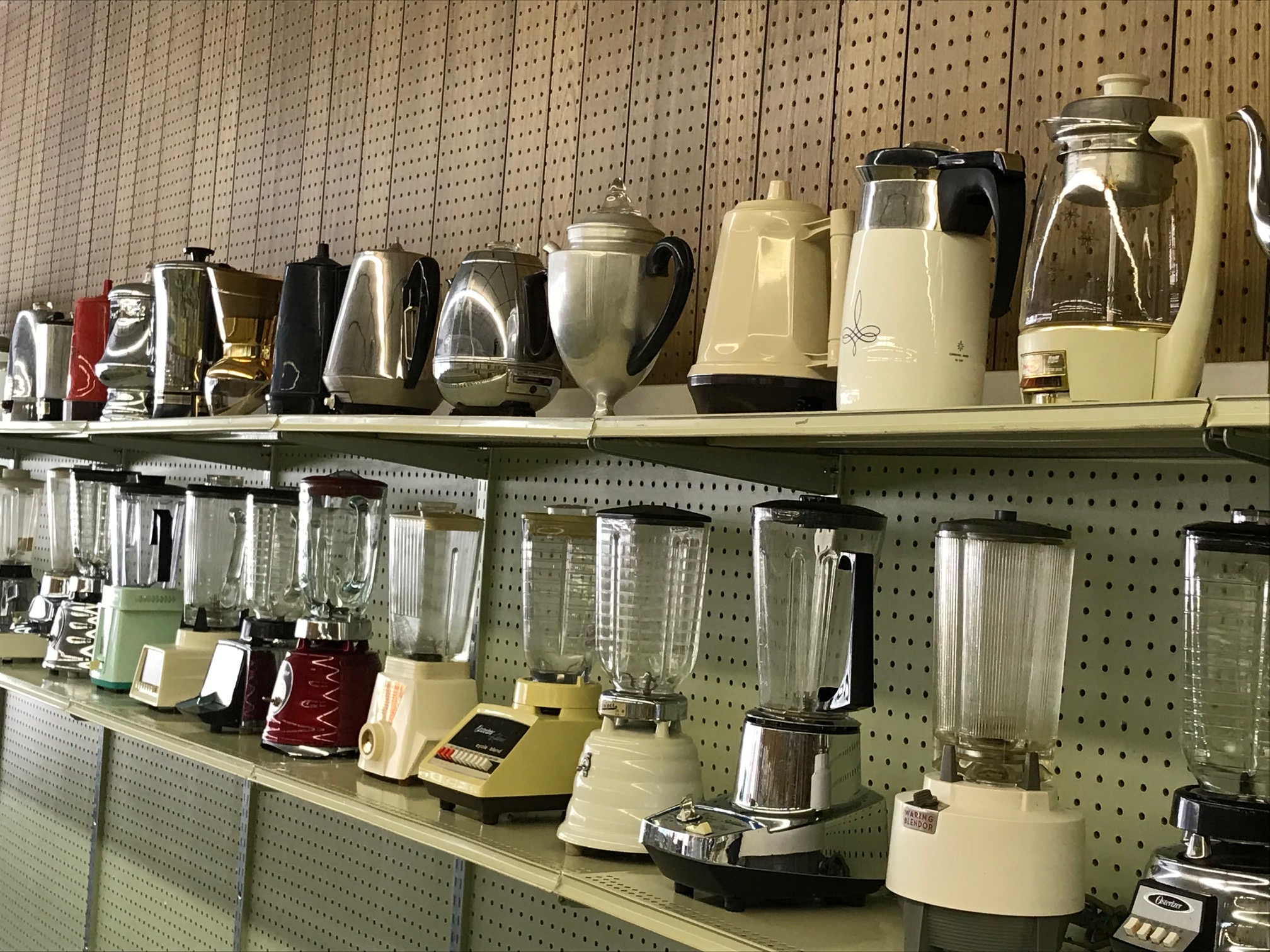
And when I started drinking coffee, she was showing me how to make it so I could have coffee whenever I wanted. We had a Mr. Coffee, which revolutionized the way people made coffee. It was a sensation. Mr. Coffee was like the the Air Fryer and Instapot of its time. But before this, most people made coffee using a percolator. I remember my Mom showed me how to make it in the Mr. Coffee and she didn’t think it was as good than when she used the percolator. I don't know what that did, but it planted some seed in my brain.
So, the next time I'm at a Salvation Army thrift shop or something like that, which I would troll pretty regularly for radios and typewriters, here's a percolator. This beautiful, shiny, chrome percolator with the little glass bubble on the top lid. It was like $2 or something. I buy it and I bring it home. My mom just was so excited. She's said ‘that looks just like the one we used to have.’ I washed it out and we made coffee in it.
The whole process of percolating coffee was just so fascinating to me, how this thing worked. There's always engineering behind all this stuff — the water boiling and going up this tube and then coming down into this basket filled with coffee grounds. Best cup of coffee I ever had my in my life. And it made my mom so happy to have percolated coffee again. Well, guess what? I bought another one and another one and another one. And of all the things I collect, I have more coffee pots than anything else. I probably have north of 500 or 600. They are almost all percolators. I have a few vacuum pots and a few old Dripolators, which would have been the grandfather of the Mr. Coffee. But they're almost all percolators. They line the walls at Cavalcade up in Croswell.
Did the coffee and percolators begin your branching out into other kitchen appliances?
The percolators were the gateway drugs. The rationale in my mind was, well, if these old percolators make good coffee, then all the old appliances are going to make a good whatever. For example, a waffle iron, toaster, mixer, blender, an ice crusher, a juicer … etc. I got them all. I started buying these vintage, small appliances whenever I would see them. None of these things were expensive. We're talking about a couple of bucks maybe at a thrift store or at church rummage sale or whatever.
Honestly, a lot of this stuff people were throwing away. But I saw how beautiful they are. We used to have design go into everything that was manufactured, whether it was a toaster or an automobile, refrigerator, or a chair. There was real thought put into ‘what do we want this to look like?’ Of course, they reflect the overall design ideals of that period. You can look at an appliance and know, by how it looks, the general era it's from.
It’s amazing to me the thoughtfulness that went into the design of seemingly simple everyday things. It fascinated me because I see the art and the engineering of a toaster. Now, most toasters are just boxes and whatever, but I have toasters of all shapes, colors and styles. That was the world at one time. You always had function, but the form was just as important.
OK, you started getting into the appliances, but c’mon, did everything really taste better?
Yes, my theory was correct. At least, in my mind, maybe that was my rationale. The small appliances led to large appliances. And that's when I thought, ‘maybe I've got a problem.’ I found myself bringing home vintage stoves. I remember when I found my first one, a 1958 General Electric range stove in a Salvation Army thrift store. I think it was $29 and I was getting it out of my van and putting it in the garage. And here comes my mom. She saw it, smiled and said ‘That is beautiful. That's a real stove.’
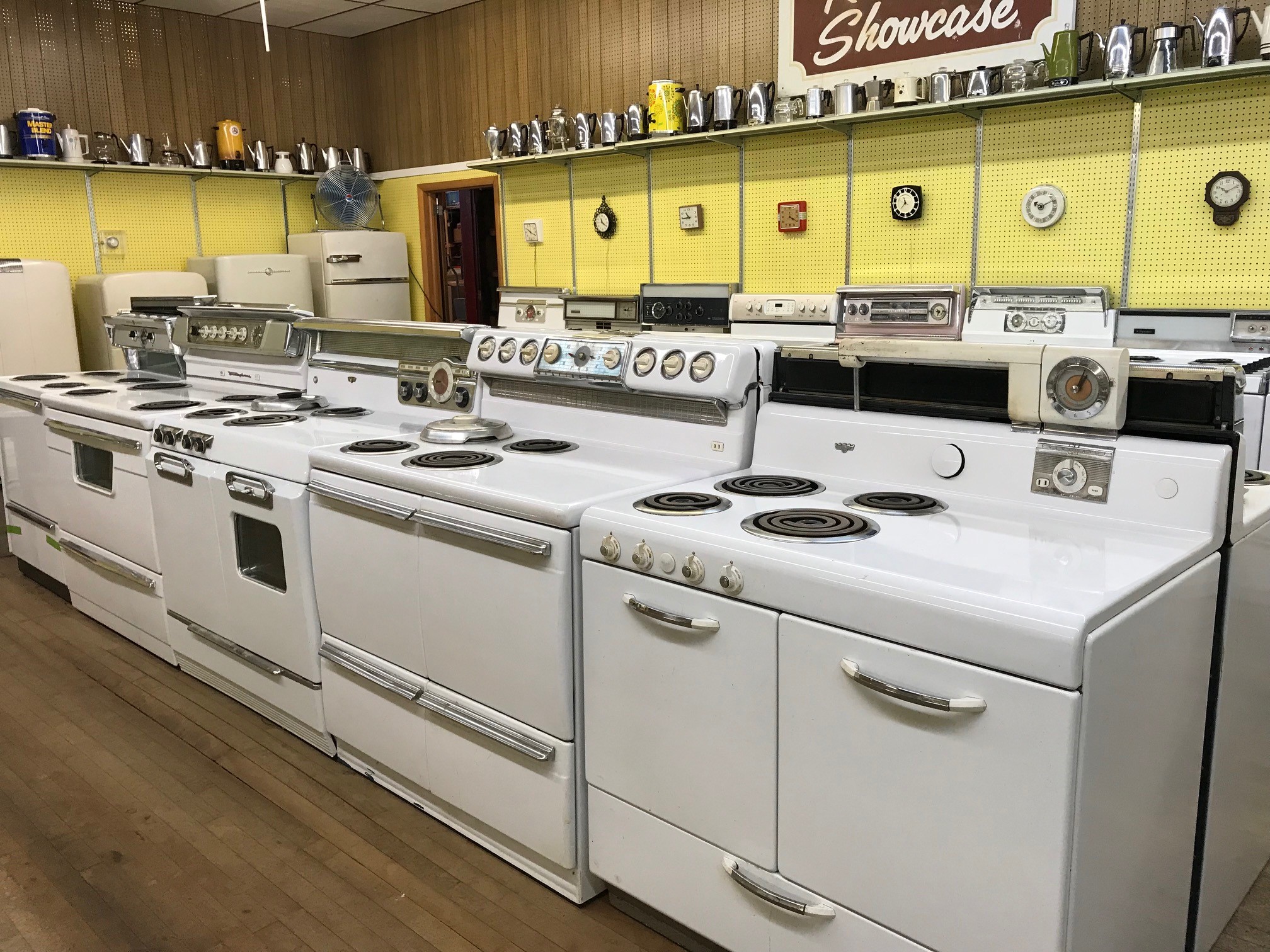
Again, so much comes back to my mom and connecting with her with this stuff. My mom was this phenomenal cook and baker. My siblings didn't have a lot of interest in what was going on in the kitchen, but I did. If I stayed in the kitchen, it was my time alone with mom. I didn't have to share her with anybody else; it was just the two of us. It was always very precious.
I’m now probably up to 50 stoves. And whereas 50 coffee pots are okay, 50 stoves take up a lot of space. And I probably have 10 refrigerators. There was no more room, at the end for this stuff. I started renting space just to keep my appliances, my collections.
When did it come to mind about using the appliances to make food and create a YouTube cooking show?
Back in 2010 my dad, who was now retired, gave me one of these little Flip video cameras for my birthday that he had bought on QVC. I'm like, ‘Oh, thanks, dad. That's really cool.’ But it sat for about a year in the back of my dresser because I thought, ‘what am I going to use this for? What am I going to record?’ I was never even much of a picture taker, honestly, let alone taking videos.
I had a cottage in Lexington, Michigan, which is up in the thumb, just north of Port Huron. And in that cottage, I have a kitchen that was very 1950s. I bought the cottage from an older couple, and I just fell in love with it. It was a time capsule. The only thing is even though they had a 50s kitchen, they had more modern appliances in there. I, of course, brought in the vintage stuff right away. I had a vintage stove in there and I had an old fridge and all that stuff.
So, I'm talking to Ralph, my partner, one day while we were at the cottage and the subject of this video camera came up. I was going to make something, and I said, ‘You know what, I always forget how to make this.’ And he's like, ‘maybe we should record it.’ I said, ‘You know what? We could. Can you do this camera? It's really simple. You use the camera and I'll do the thing.’ That’s kind of how it started.
And then we were talking about this and wondered if I could share this recipe. Well, maybe a YouTube account, and then it's like, ‘well, next time we're up here, we'll do another video.’ I would cook when we were up there, almost every day. It was like, ‘hold the camera, I'm cooking anyways.’ I wasn’t doing anything extra. I also liked the idea of Ralph, who was not really a cook, holding the camera. He would ask me questions like ‘Why are you cutting it like that? What size pan do you need for this?’ and the kinds of things people who maybe have never made the dish or weren't cooks would want to know.
That kind of started this format that we have for Cavalcade of Food. The word cavalcade has been in in my vocabulary my whole life. I love that term. And it came back from my radio collecting days because there used to be a radio program called Cavalcade of Stars.
You mentioned earlier a Cavalcade in Croswell, Michigan. What is that?
So, all this stuff was in my basement, garage, and then in a warehouse that I rented. I kept jamming it in. But I knew in my heart that one day I wanted to have all my things in one place, so I can see everything I have and share it. Because it's fun to have stuff, but what good does it do packed away in a box you haven't opened in 20 years? You know what I mean? It has no value. The warehousing of all this stuff was a temporary thing until I could figure out what I wanted to do.
But I had a vision that I wanted to have everything in one place, like a museum. When we started doing Cavalcade of Food, I wanted to get the production of the videos out of my house and into a place where I had everything because then I could use it all easily in the videos. And some of the more popular episodes were what we call ‘The Stove Exchange.’ A few times of the year, I would change the stove out and we would film it. We would show me taking out a 1955 General Electric and putting in a 1958 Frigidaire. I had more people watch for that than a cooking show.
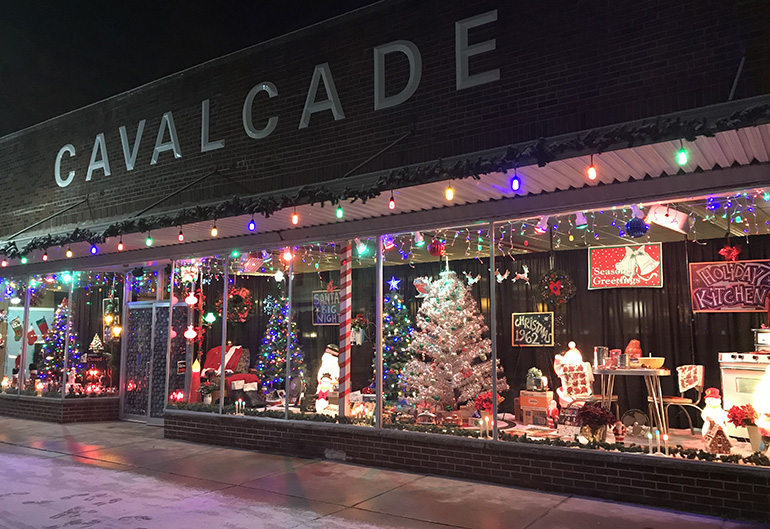
Anyways, I started looking for a building to purchase where I could house everything. But I had some requirements and it had to be up near Lexington, where I planned to retire. That's where I was going to live because I love that part of the state. I was looking up there for a building and it was hard to find one that I felt was right. It had to be one floor, with a completely open floor plan and a large access door to bring stuff in and out. And, of course, a place where I could build a kitchen studio to produce Cavalcade of Food.
Well, I really looked, for probably 10 years. And one day, Ralph and I were in the Ben Franklin store in Croswell, where we went regularly. We just loved it. It was that old time, variety Five and Dime store kind of place. We had gotten to know the owners of the store because we were regulars there and she, Gayla, came up to me. This was in June of 2017 and she said, ‘I want to tell you we are retiring at the end of the year and going to close.’ I was heartbroken. I told her we loved the store. She appreciated us coming in all these years, but said it was time. Their family had run that store since 1938.
But later that night I was thinking about it and I said ‘Oh my god, you know what? That store is just the kind of building I could use.’ The next weekend, I went back there and asked her what they were planning to do with the building after they closed at the end of the year. She said they were going to sell it and I told her I was really interested. I told her I’m a collector and started going through everything. She just looked at me and smiled the whole time. God only knows what she was thinking.
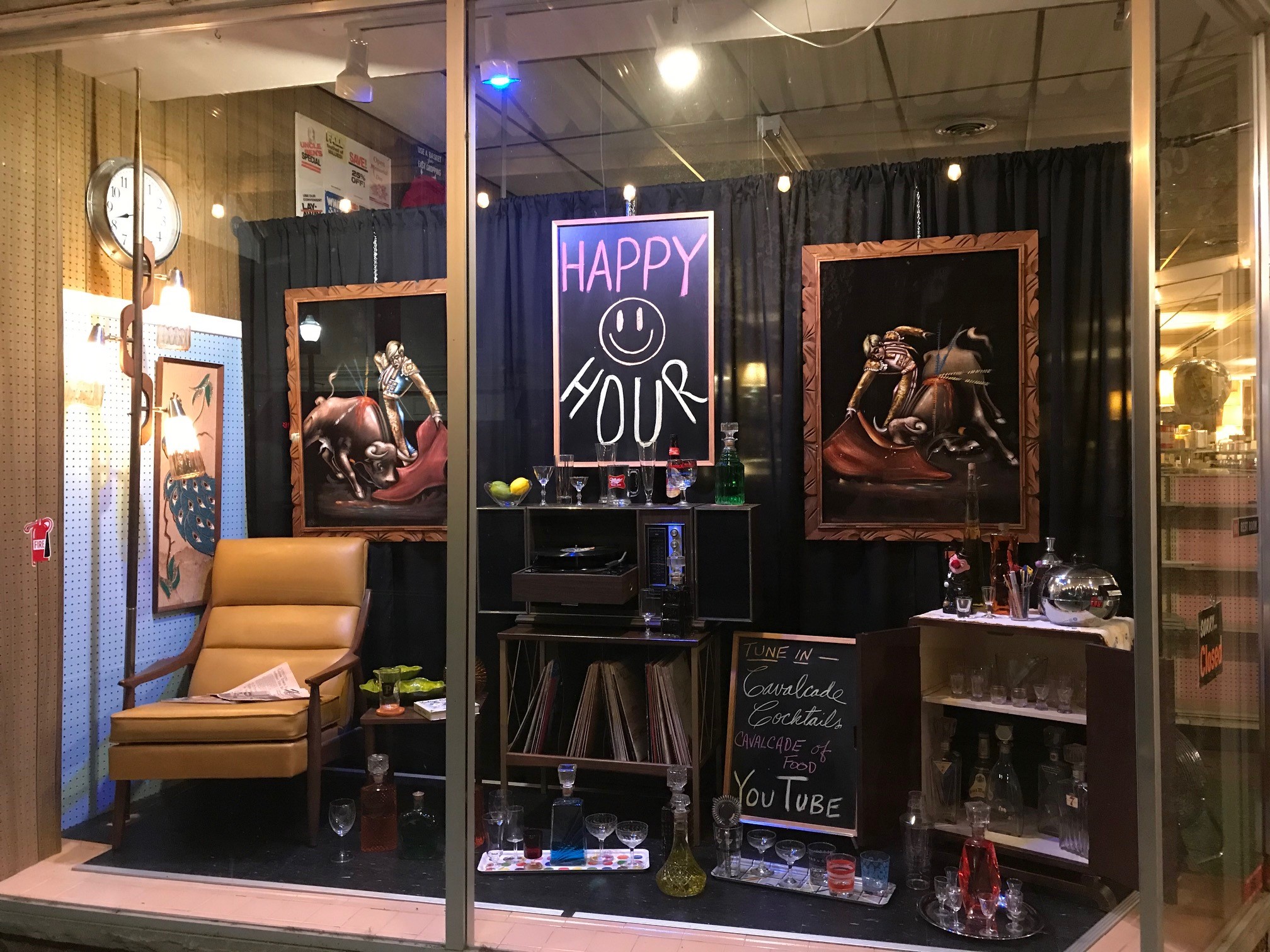
Time passed and it got to be the week before Christmas. They were going to close on December 31. My phone rang and I answered. It was Gayla from the Ben Franklin. She asked if I was still interested in the building? I said ‘yes, very.’ Her real estate agent had another buyer, but she sold it to me instead. And that's just how it went. The store closed on December 31 and it was February 11, 2018, that I bought the building. I'm still close to the family. They're just the most wonderful people.
I transferred everything inside and began to lay it out. But when I bought the building, they did not have platforms for display windows. The building is 49 feet across, all glass in the front. They had merchandise right up to the window, but they didn't have any kind of a formal display in there. Even though I knew that the building was not going to be open to the public with any kind of regular hours, I wanted to be able to share the collection with the community. So, I built these platforms specifically to do this kind of stuff. I put electrical outlets all over the place, timers and things like that. Often, there’s a seasonal theme. Recently, I had a window that was all vintage Tupperware from the 50s and 60s. The window was called, ‘Ain't no party like a Tupperware party.’ Honestly, changing the windows is one of the most fun things I ever get to do.
Is there anything else you collect that hasn’t been mentioned?
Cookbooks. At Cavalcade, I have a cookbook library with maybe 2,000 of them. But the cookbooks I love are not the pristine, never-cracked-open first editions. Even though I have a couple of both, the cookbooks that have the greatest value to me are the ones that are stained and dogeared. They have all these notes written along the recipe like ‘add an extra teaspoon of salt,” and stuffed inside are all these handwritten recipes for all kinds of things that fall out of these books when I pick them up. You know, for muffins, cookies, pot roast, you name it, written on the back of an envelope in pencil.
And I hold that in my hand and I touch one of these old stoves and I think, ‘This book, this appliance, fed a family, probably with thousands and thousands of meals. There was somebody who labored over this every day to feed their family, to care for somebody.’ To me, feeding somebody is one of the most loving things you can do. That's how I was raised. That was my mother's philosophy. And believe me, the more you ate, the more she loved you. That's what excites me about these things. They don't have a lot of meaning on their own until you connect this human element.
Know a Wayne State University faculty or staff member we should spend Five Minutes With? Send along their name, contact information and a few sentences about the person to media@wayne.edu.
